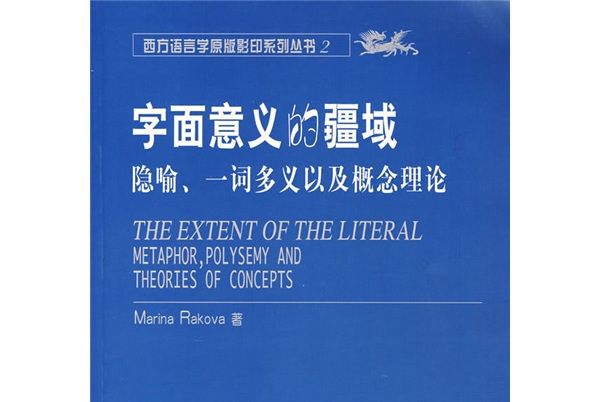基本介紹
- 中文名:字面意義的疆域:隱喻、一詞多義以及概念理論
- 作者:[英]拉科娃(Rak-ova M.)
- 出版社:北京大學出版社
- 出版時間:2004年9月
- 頁數:232 頁
- 定價:20 元
- 開本:32 開
- 裝幀:平裝
- ISBN:9787301068786
內容簡介,圖書目錄,
內容簡介
《字面意義的疆域:隱喻、一詞多義以及概念理論》主要研究隱喻、多義性與概念結構的關係。作者採用敘述方式,主張重新思考有關字面意義及其與概念結構關係的標準假設。作者採用神經心理學和心理學的資料,支持多義性屬於辭彙層而不是概念層的觀點,因而向某些在認知語言學、辭彙語言學和分析哲學的框架內的隱喻和多義性的基本研究工作提出挑戰。
圖書目錄
Preface
1 Introduction:On the Nature of the Literal.Metaphorical Distinction
2 Metaphor in Cognitive Linguistics
2.1 The cognitive linguistics revolution
2.2 Experientialism and conceptual organization
2.3 Reasons to take experientialism seriously
2.4 Cognitive semantics and the literal.metaphorical distinction
2.5 Some problems for the philosophy of experientialism
2.6 Adjectival polysemy in the experientialist framework
3 The‘Hot’Polysemy
3.1 Why neurophysiology matters to semantics
3.2 The capsaicin receptor
3.3 Are hot peppers‘hot’for everyone?
3.4 The pain pathway
3.5 The standard assumption and the‘hot’polysemy
4 Across Sensory Modalities
4.1 Bright sounds and loud lights
4.2 Seeing sounds and tasting shapes
4.3 How different are synaesthetes and non.synaesthetes?
4.4 Cross.modal associations and synaesthetic metaphors
4.5 Synaesthetic adjectives and the standard assumption
4.6 The no.polysemy view of conceptual structure
4.7 How could have psychologically primitive concepts come abolJt?
5 Double.Function Terms
5.1 Apuzzle
5.2 Asch on double.function adjectives
5.3 Discussing Asch’S research:cross.linguistic studv
5.4 Conceptual atomism
5.5 Discussing Asch’S research:language acquisition study
6 Double.Function Terms Again
6.1 Adjectival polysemy in psycholinguistic research
6.2 Discussing Williams results
6.3 The processing of alternative meanings by cerebral hemispheres:the beginnings
6.4 The processing of alternative meanings by cerebral hemispheres:later studies
7 Words and Concepts
8 Back to Cognitive Semantics
8.1 Sweetsers mind.as.body metaphor
8.2 Enter criticisms
9 Polysemy in Lexical Semantics
9.1 Semantics and conceptual structure:the beginnings
9.2 Polysemy and conceptual structure
9.3 The generative lexicon
9.4 The disquotational lexicon and the problem of polysen
10 The No.Polysemy View:What It Is and What It Is N
10.1 The one literal meaning assumption
10.2 The no.polysemy view
10.3 Words,meanings,concepts,and more
10.4 Metaphors forever
11 A Very Short Conclusion
Notes
References
Index

